Biology Khanacademy Unit 5: Heredity
1/48
There's no tags or description
Looks like no tags are added yet.
Name | Mastery | Learn | Test | Matching | Spaced |
|---|
No study sessions yet.
49 Terms
Fertilization
The process of a sperm cell and egg fusing.
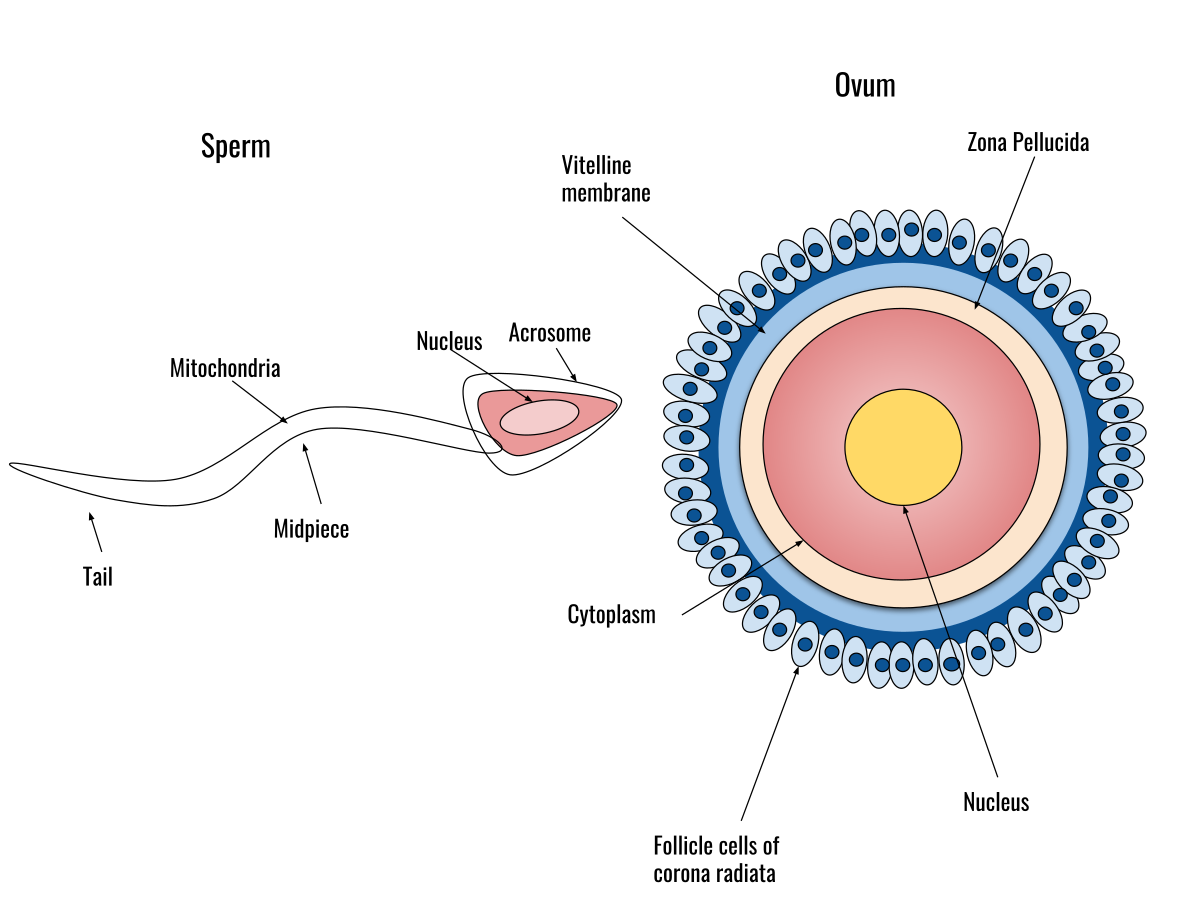
Gametes
Sex cells. In humans, includes ovum and sperm, and have 23 chromosomes. The 23rd one is your sex chromosome.
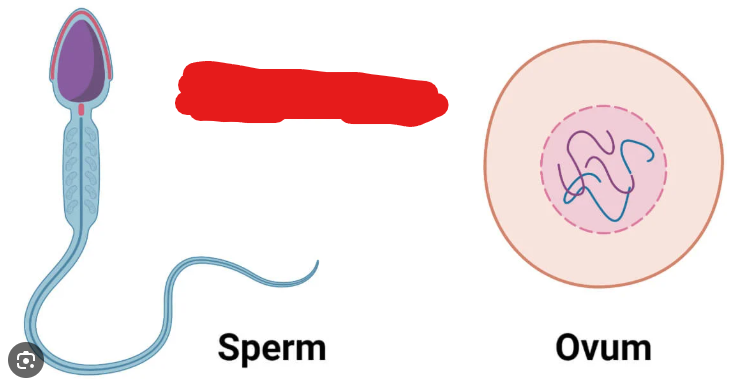
Ovum
The sex cells present in females (eggs).
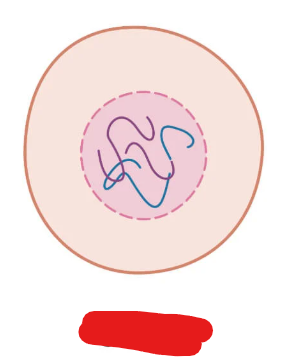
Sperm
The sex cells produced and present in males (sperm).
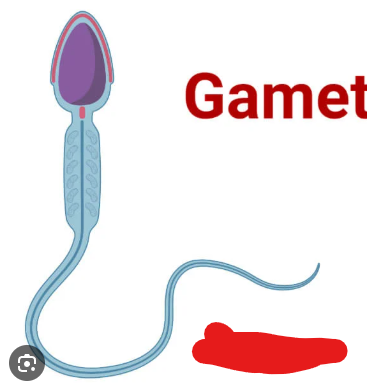
Zygote
A fertilized egg, created after the fusion of a sperm cell with an ovum.

Meiosis
The process in which germ cells divide to produce gametes. Only occurs in germ cells, not somatic ones. In this process a diploid parent cell turns into 4 haploid daughter cells whose chromosome number is halved.
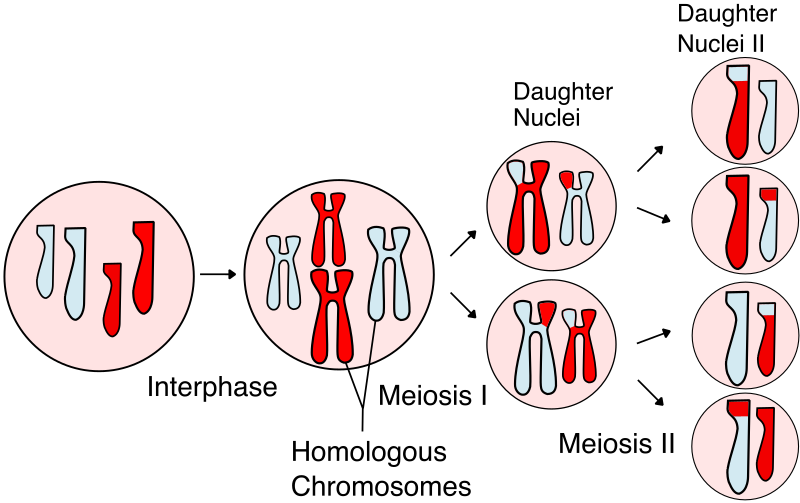
Meiosis 1
The first several phases of meiosis. This process does not preserve chromosome number.
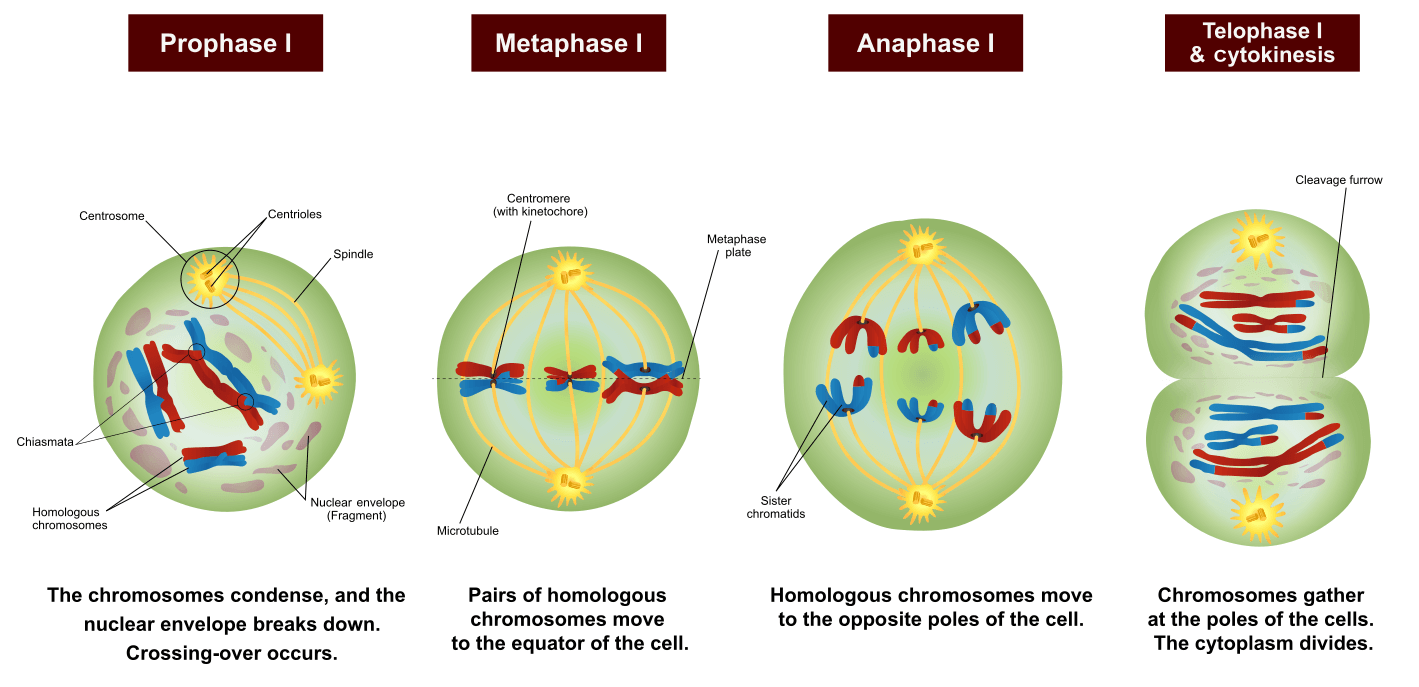
Prophase 1
The beginning of meiosis 1. In this phase, similarly to prophase in mitosis, nuclear envelope begins to dissolve and DNA bunches up into condensed form. In addition cross over occurs which means chromosomes exchange one, or multiple, small pieces with each other to increase genetic variation. Lastly meiotic spindle is built.
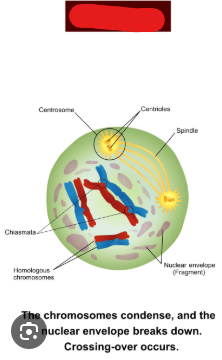
Tetrad
A pair of homologous chromosomes which have synthesized i.e. are each made up of 2 sister chromatids.
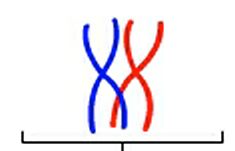
Chiasmata
The site at which chromosomes with double sister chromatids exchange small tags during prophase 1 in meiosis in order to increase genetic variation in offspring. The site at which crossover occurs.
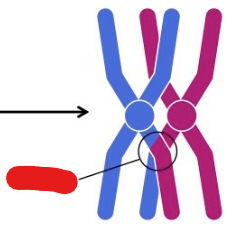
Metaphase 1
The phase in meiosis 1 at which tetrads (pairs of homologous chromosomes) align at the metaphase plate and are connected, each, to one centrosome via microtubules. Additionally centrosomes move to opposing sides.
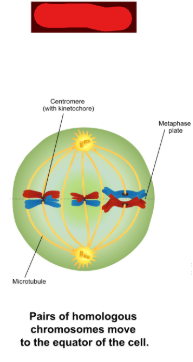
Meiotic Spindle
The structure made up of microtubules used during meiosis 1, specifically anaphase 1, to pull apart tetrads.
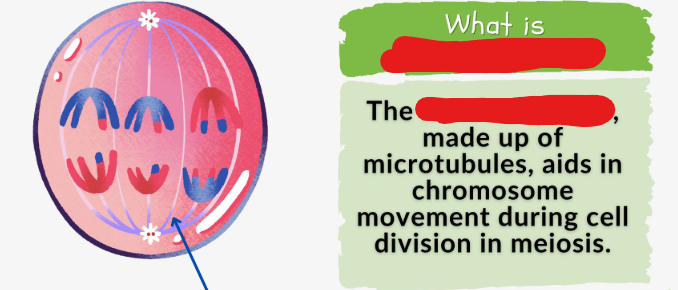
Anaphase 1
The phase in meiosis 1 at which tetrads are pulled apart by microtubules, seperating them into tagged chromosomes with 2 chromatids.
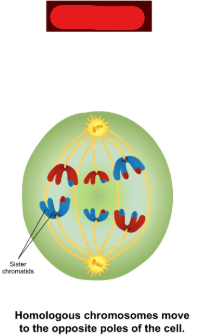
Telophase 1
The phase in meiosis at which chromosomes begin to unravel again and 2 nuclear envelopes begin to form around previous, now seperated, pairs of homologous chromosomes. Additionally cytokinesis begins to take place at this stage and sometimes even occurs alongside it. In some organisms the chromosomes stay condensed and the nuclear envelope is not built due to the fact that cells will soon begin meiosis 2.
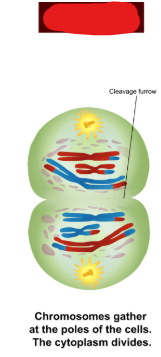
Meiosis 2
The last several phases of meiosis. In this process chromosome number is preserved. Basically mitosis for haploid cells (because there will only be 23 chromosomes in each resulting cell from meiosis 1 and mitosis occurs on somatic cells which have 46 chromosomes if referring to the human genome.)
In certain organisms the centrosome will duplicate during or before this process in order to make one available for the upcoming reactions. In some other organisms the centrosome will break down, allowing the 2 centrioles inside to act as centrosomes and to extend microtubules during prophase 2.
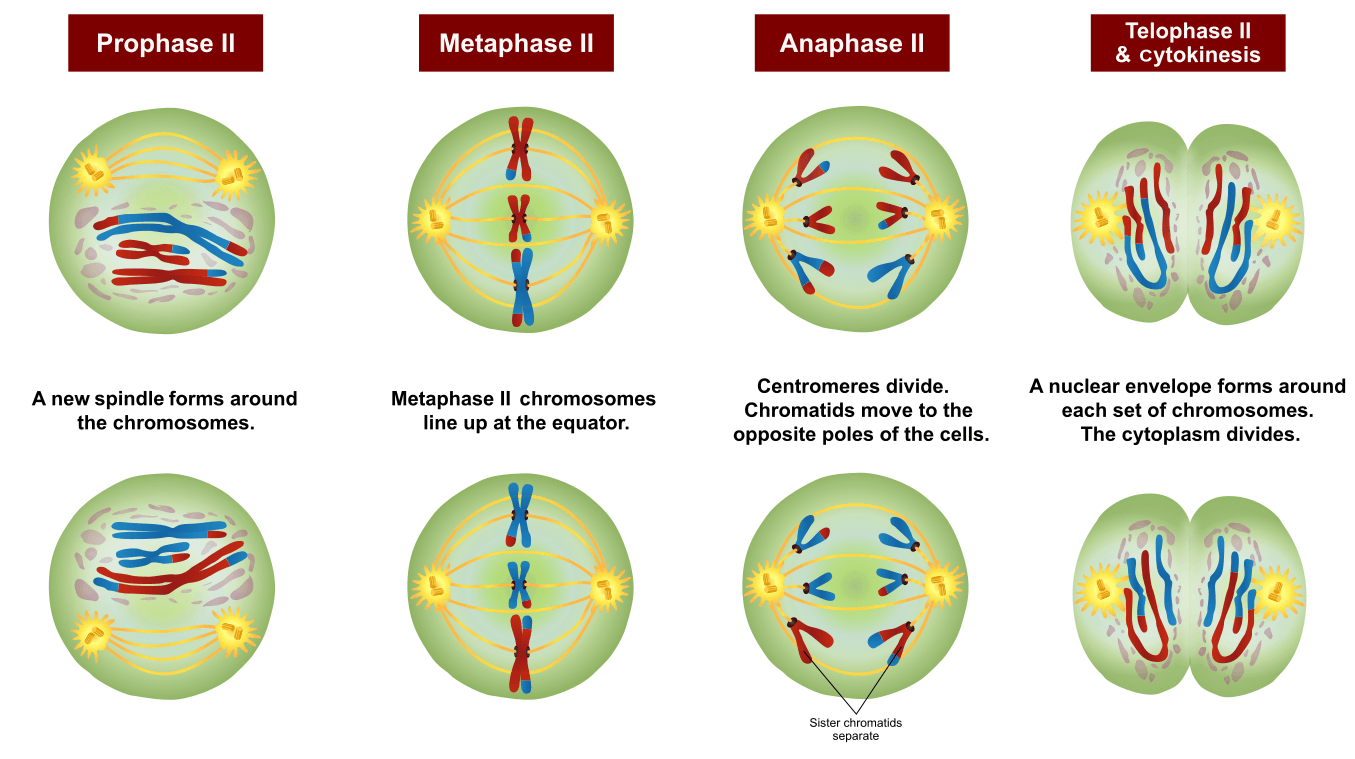
Prophase 2
The phase in meiosis 2 at which the nuclear envelope dissolves and chromatin condenses into chromosomes. This is the same as prophase in mitosis but done on chromosomes which have crossed over and exchanged tags. Lastly the meiotic spindle is once again built during this phase.
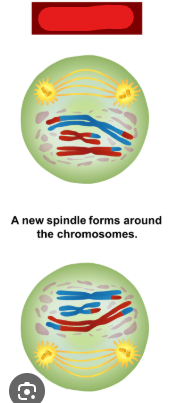
Metaphase 2
The phase in meiosis 2 at which centrosomes migrate to poles, and chromosomes line up on the meta-phase plate. This is the same as metaphase in mitosis but done on chromosomes which have crossed over and exchanged tags.
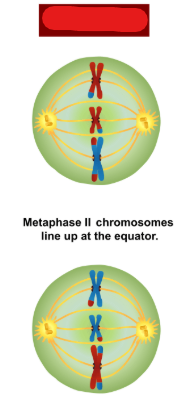
Interphase 2
A phase that, depending on the cell, will occur after meiosis 1 in order to allow for cells to rest.
Anaphase 2
The phase in meiosis 2 at which the meiotic spindle pulls sister chromatids apart. This is the same as anaphase in mitosis but done on chromosomes which have crossed over and exchanged tags.
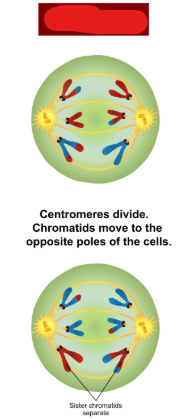
Telophase 2
The phase in meiosis 2 at which the sister chromatids are fully pulled apart, the nuclear envelopes around the 2 split subgroups begins to form and cytokinesis either begins or has begun to occur. Additionally chromosomes begin to unravel back into their chromatin form and the meiotic spindle dissolves in this stage. This is the same as telophase in mitosis but done on chromosomes which have crossed over and exchanged tags.
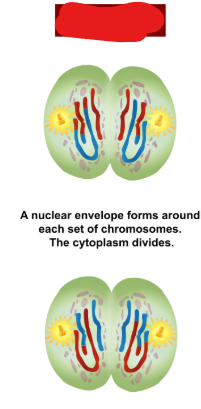
Synaptonemal Complex
A protein structure which helps homologous pairs of chromosomes cross over in order to increase genetic variation. In reality during crossover chromosomes are actually positioned one on top of the other. This complex binds them together and makes it possible for them to maintain this position. This complex breaks down after chromosomes connect and leave the chiasmata to keep certain regions connected.
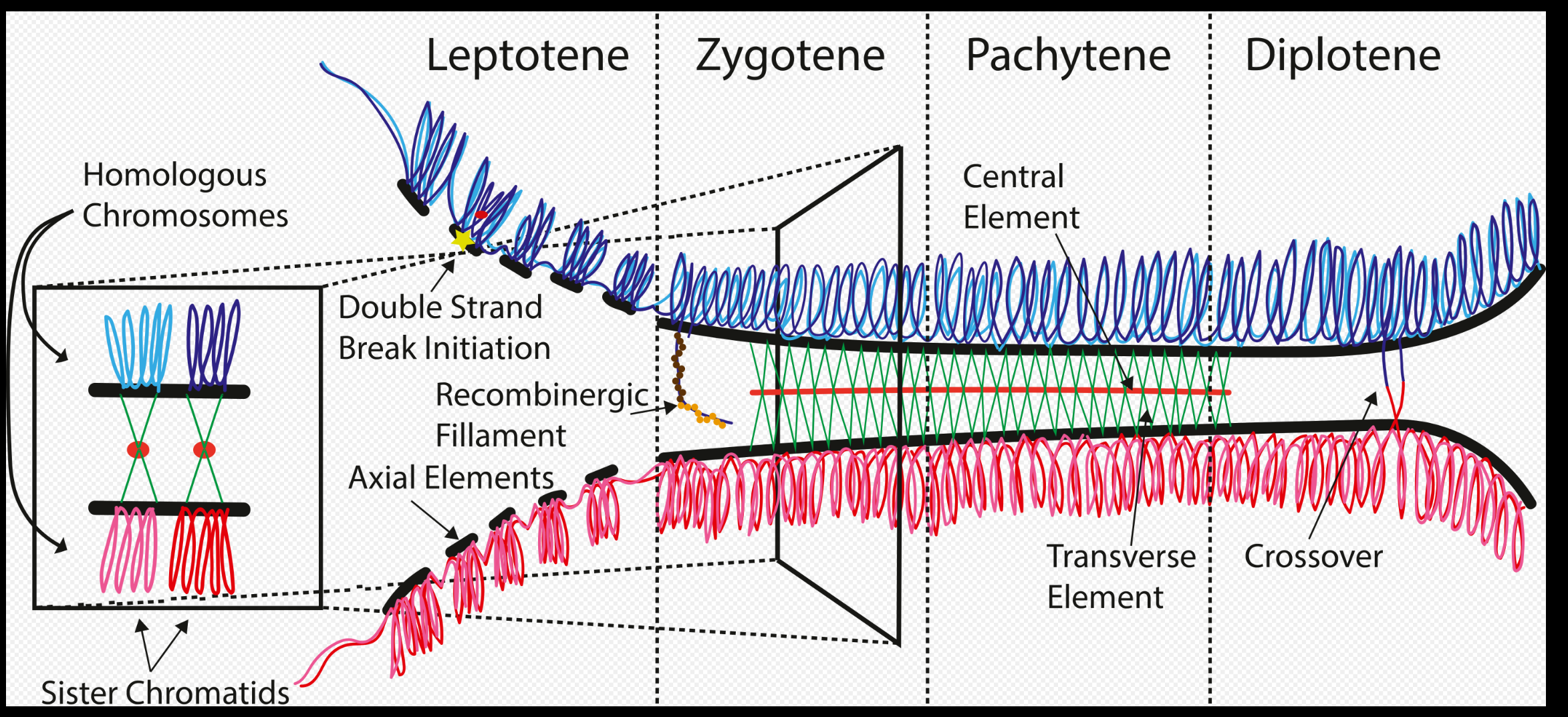
Somatic Cells
The majority of cells in your body, can only undergo mitosis.
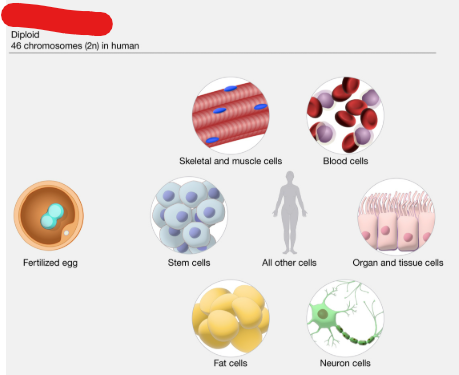
Primordial Germ Cells
Germline stem cells that give rise to gametes in vertebrates. These can either undergo mitosis to replicate or meiosis to turn into gametes.
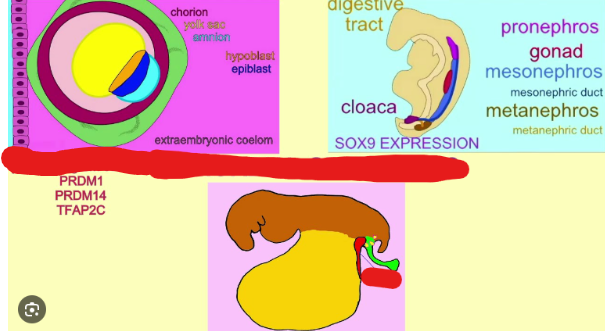
Allele
A specific version of a gene. Basically a specific configuration of a segment of a sequence of DNA that codes for a specific type of a certain protein or a specific type of a functional RNA strand in humans. A blue eye gene would be an example of an _____.
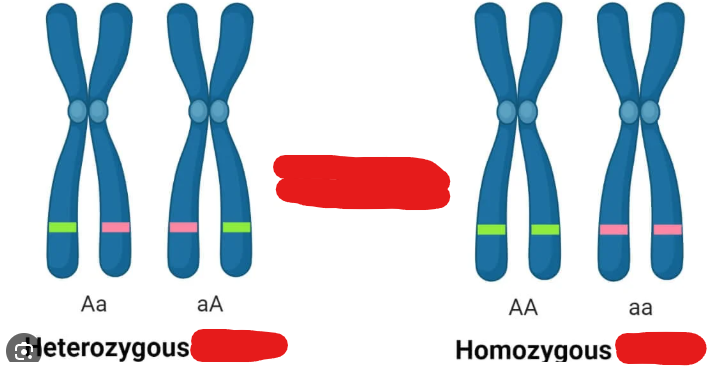
Heterozygous Genotype
Genotype where the alleles given by the mother and father are different.
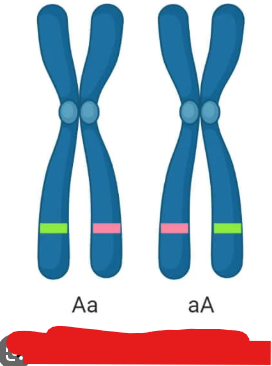
Homozygous Genotype
Genotype where the alleles given by the mother and father are the same.
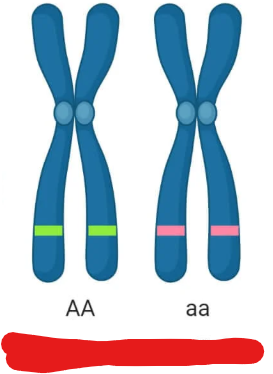
Dominance
In the context of genetics the idea that one trait is dominant over others. This means that when paired together the dominant one will always be expressed.
Genotype
The versions of a gene a person gets from their mother and father, or more broadly an organism’s genetical information.
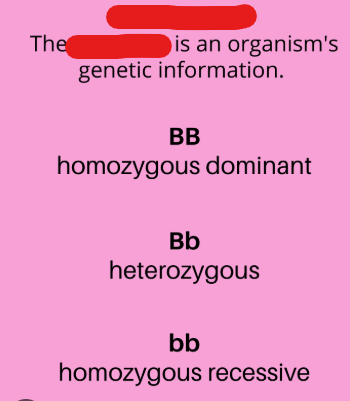
Phenotype
The versions of a gene that is actually expressed in an organism. Differs from genotype in that a person can have a genotype of blue and brown eyes, but their _____ will be brown eyes since it is dominant.
Basically the set of observable traits in an organism. These can also be affected by the environment around the organism.
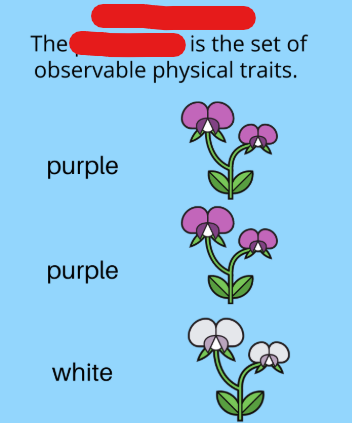
Recessive
In the context of genetics. A gene which is dominated over if paired with a dominant one.
Genes
Sections of DNA that code for specific proteins or functional RNA. This is the actual section that codes for the specific protein whereas alleles are the specific configuration in that certain section. Alleles determine phenotypes whereas _____ are just the location on a DNA strand where a certain trait is coded for. The alleles code for a the type of the certain trait expressed at the gene, e.g. humans have a _____ for eyes but they can get an allele for blue eyes if both their parents give them homozygous recessive alleles.
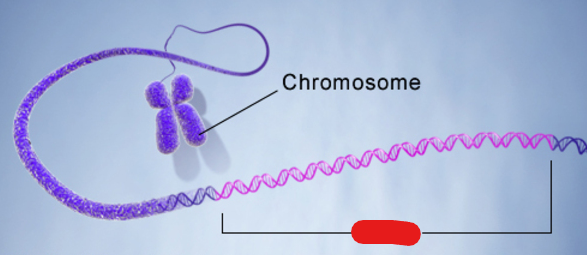
Linked Traits
Traits with genes present on the same chromosome resulting in certain alleles necessitating that the expressions of each gene come paired with each other. These genes also typically have to be close to each other because if they are far away, they can be unlinked by crossing over during prophase 1.
In reality, no traits are _____. But traits which have genes closer together tend to be inherited more often as a pair, and hence why sometimes assortment is not 100% individual, even though all combinations of traits are possible.
Individual Assortment
2 or more genes which lie on different chromosomes allowing for no linkage between the traits. This means that each allele of each gene can be paired together. In this case each allele of a certain gene comes paired with another due to them lying on the same chromosome.
The law of segregation
The idea that when an organism makes gametes each gamete receives just one gene copy. This is due to meiosis. Chromosomes pair up in pairs with other chromosomes expressing the same traits then during anaphase 1 they are split up resulting in only one gene relating to the trait being present in a gamete.
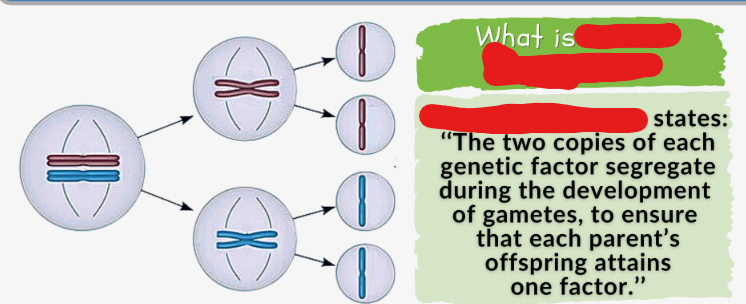
Test Cross
A type of test used to determine whether an organism is homozygous dominant or heterozygous (because their phenotype will be the same and hence it can not be visually determined). In this test a homozygous recessive is cross-bred with the organism in question. If the ratio of dominant offsprings to recessive ones is 1 => heterozygous. If only dominant offsprings => homozygous.
Image attached outlines an example of a type of test done to determine the genotype of green peas.
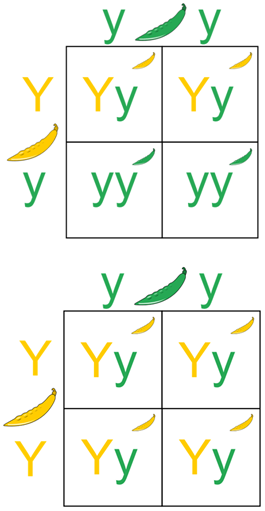
The law of independent assortment
A law that states the alleles of 2 (or more) different genes are sorted into gametes independently of one another. Almost always true except for cases in which genes lie close together on chromosomes (as in that case they usually stay together even if crossover occurs).
Pedigree Diagram
A tool used in order to outline phenotypes (and genotypes potentially) across generations. In these diagrams.
Females are represented by circles
Males by squares
Homozygous recessive genotypes are represented by a hollow circle or hollow square.
Rest (i.e. the dominant phenotypes) are represented by filled in circles or squares.
Horizontal lines connecting 2 shapes are marriage lines and outline 2 people who have had a child.
Vertical lines indicate offsprings of certain shapes i.e. people.
Note that this configuration for the diagrams applies to most of them however in special cases the configurations may be changed in order to best fit the trait, across generations, being studied.
The picture attached shows an example of one of these diagrams.
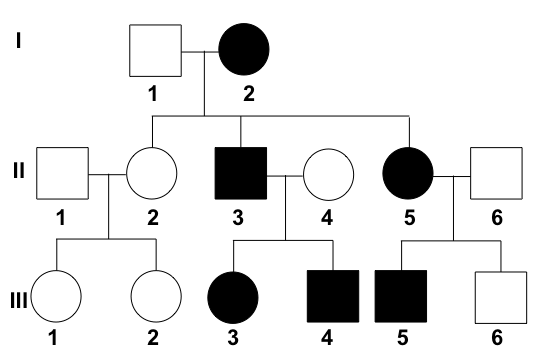
Complementary Genes
Different genes that interact with each other in such a way that both are required to produce a particular trait or phenotype.
The picture attached outlines an example of a cross test for a ______ _______ pairing.
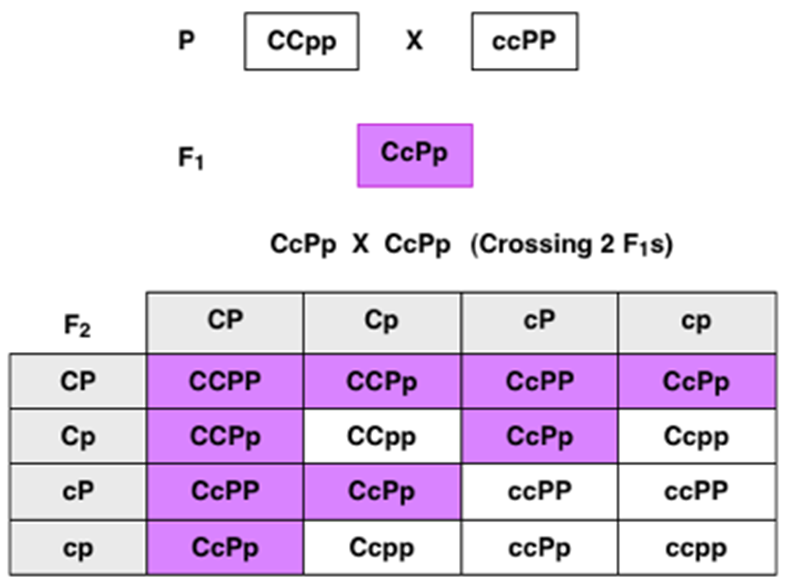
Polygenic Inheritance
Inheritance of traits that are polygenic, i.e. are controlled by a number of different genes. In this type of inheritance traits often form a phenotypic spectrum.
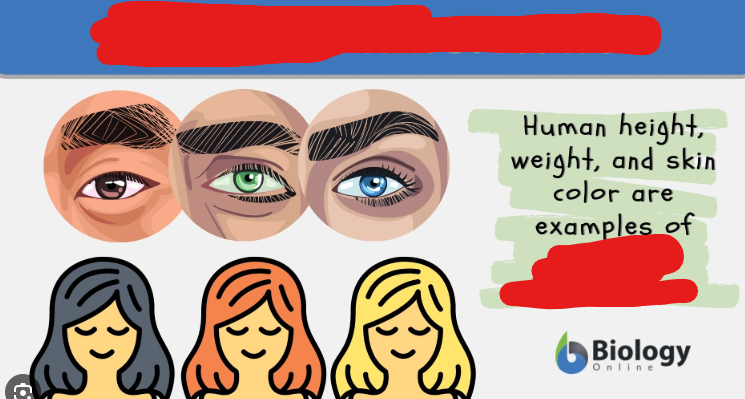
Epigenetics
The study of changes in organisms caused by modification of gene expression rather than alteration of the genetic code. Usually refers to how your behaviour and environment can affect the way your genes are expressed.
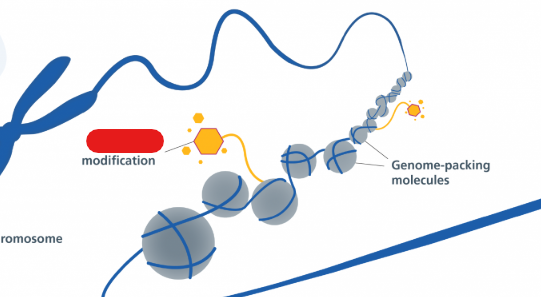
Sex Linked Traits
Traits linked to the sex chromosomes of an organism. Basically certain traits, in this case, will be determined by the sex chromosomes inherited by the organism, or will be more likely to be expressed.
Essentially a trait determined by its presence on the sex chromosome.
Image attached outlines pattern of inheritance for a sex linked trait.
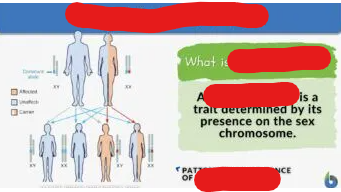
Chromosome Theory of Inheritance
The theory that genes are found at specific locations on chromosomes, and that behaviour of chromosomes during meiosis explain Mendel’s laws of inheritance.
Picture attached outlines how this theory explains variation inbetween offsprings in both phenotypes and genotypes for a specific trait.
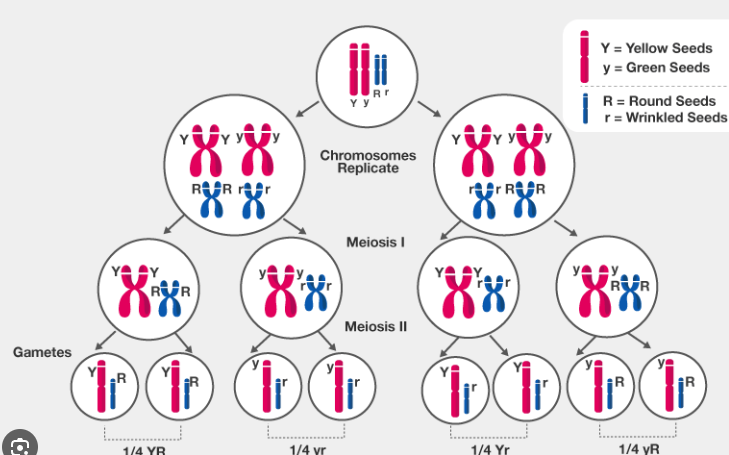
X Linked Genes
Genes that lie on the X chromosome. These have distinctive inheritance patterns because they are present in different numbers within males and because these genes are nearly 100% linked to the X chromosome since sex chromosomes rarely undergo crossover during prophase 1. These genes, by definition, must also not lie on the Y chromosome.
Hemophilia is an example of a condition/disorder controlled by these genes. Given that a mother carrier and an unaffected father breed together, males have a 50% chance of getting hemophilia (It is given that the father gives Y and the mother will either give a recessive X gene or a dominant one) however females have a 0% chance of getting it due to the fact that the father will donate a dominant allele, thus leaving them only with the ability to be carriers if they receive the recessive allele from the mother or the ability to be clean if they receive the dominant allele.
The picture attached outlines a diagram for the case that an affected father breeds with a clean mother.
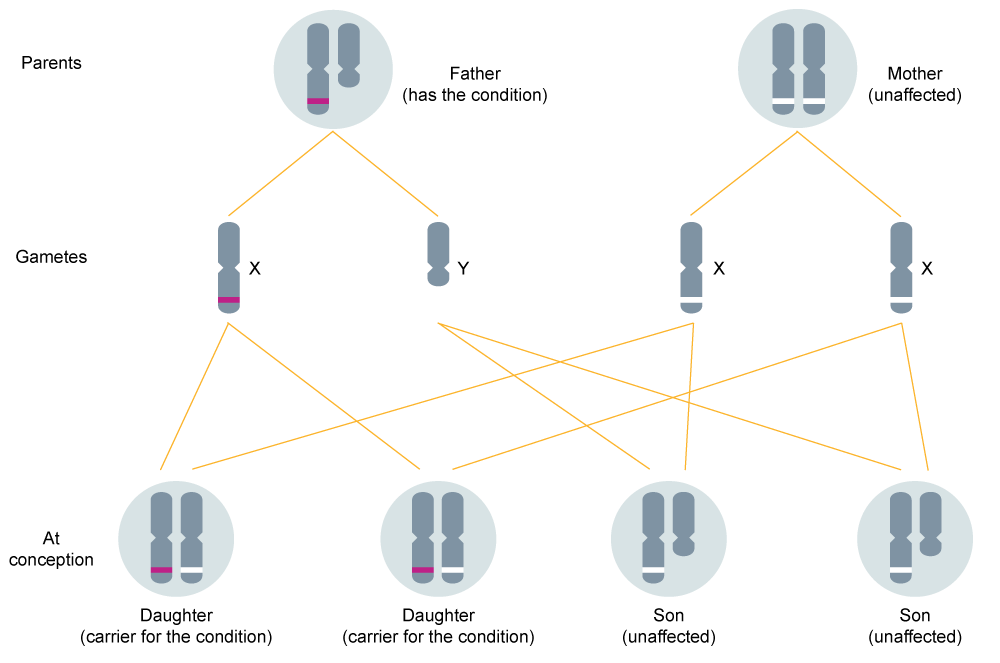
Genetic Linkage
The phenomenon of genes, which are close together, being inherited as a pair more often than not.
Parental configuration of alleles
A configuration of alleles in a gamete that resulted from 2 or more linked traits sticking together. This configuration is likely to happen for linked traits.
Recombinant Configuration of alleles
A configuration of alleles in 2 or more gametes that resulted from 2 or more linked traits splitting apart during crossover. This is unlikely to happen. These happen when crossover occurs on only one of the genes which, since they are close together, is unlikely. Additionally double crossover must not occur.
Recombinant Frequency
A measure of the percentage of the smallest (smallest in the sense of having the lowest number) class of offsprings in the study of whether 2 or more traits are linked. Formula is Recombinants/Total Offspring * 100.
This value maxes out at 50% which implies a fully non linked relationship between the two genes being measured.
Extranuclear Inheritance
The process of mitochondria and chloroplasts replicating their DNA and themselves independently of the nucleus of the cell they are in.
Maternal Inheritance
An type of inheritance that happens when organisms only inherit chromosomes/DNA from the birthing organism. In humans mitochondria are present in egg cells and consist only of the mothers DNA. This stays true even after fertilization resulting in mitochondria of humans only holding the DNA of their mothers. This is a type of extranuclear inheritance of DNA as it happens outside the nucleus.